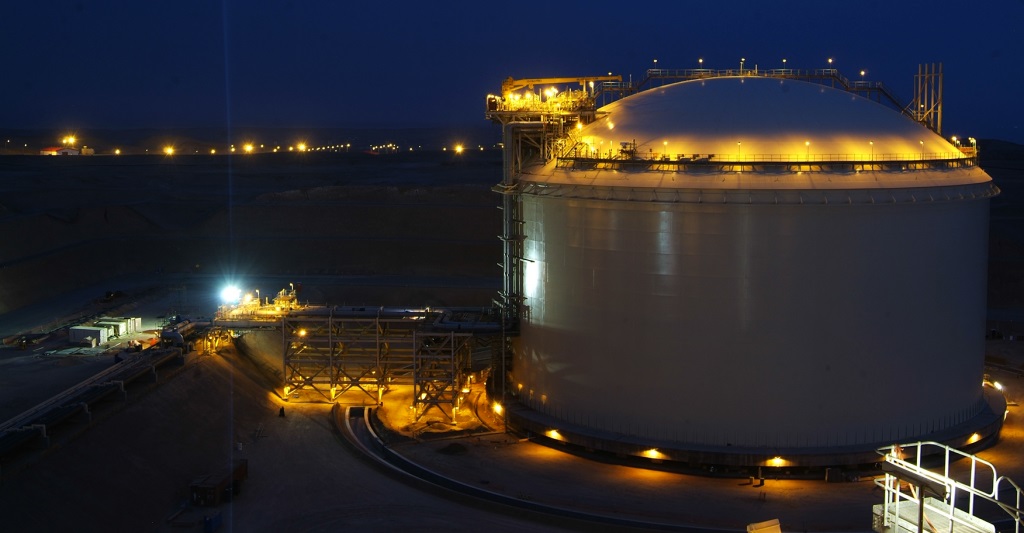The State Of LNG In BC: Examining Five Major Projects

Table of Contents
We will delve into the specifics of: LNG Canada, Coastal GasLink, Woodfibre LNG, Kitimat LNG, and Cedar LNG. Each project presents unique opportunities and challenges, contributing to the complex and evolving landscape of LNG in BC.
Project 1: LNG Canada – A Deep Dive into its Export Capacity
LNG Canada, located in Kitimat, BC, is a cornerstone of the province's LNG strategy. Its immense export capacity makes it a key player in the global energy market.
Location and Infrastructure:
- Location: Situated on a deep-water port in Kitimat, offering access to global shipping lanes.
- Pipeline Connections: Connected to the Coastal GasLink pipeline, ensuring a reliable supply of natural gas.
- Port Facilities: State-of-the-art facilities designed for efficient LNG loading and export. The port's depth allows for the handling of large LNG carriers.
Environmental Impact Assessment and Mitigation:
- Key Concerns: Greenhouse gas emissions, potential impacts on water quality, and effects on local wildlife.
- Mitigation Strategies: Implementation of advanced emission control technologies, water treatment systems, and habitat restoration programs. Significant regulatory approvals have been secured.
- Regulatory Approvals: The project has undergone rigorous environmental reviews and obtained necessary permits.
Economic Benefits and Job Creation:
- Job Estimates: LNG Canada is projected to create thousands of direct and indirect jobs during construction and operation.
- Tax Revenue Projections: The project will generate significant tax revenue for the provincial and federal governments.
- Spin-off Industries: The development will stimulate growth in related sectors such as construction, transportation, and manufacturing.
Current Status and Future Outlook:
- Key Milestones: Construction is substantially complete, and the facility is now operational.
- Challenges Faced: The project faced delays and cost overruns, common in large-scale infrastructure projects.
- Future Development Plans: LNG Canada plans to operate for decades, contributing significantly to BC's energy sector.
Project 2: Coastal GasLink – Focusing on its Innovative Technology
Coastal GasLink is a crucial pipeline infrastructure project that transports natural gas from the northeastern BC to the LNG Canada facility in Kitimat. Its innovative pipeline technology minimizes environmental impact.
Location and Infrastructure:
- Route: A 670 km pipeline traversing challenging terrain in Northern BC.
- Technology: Advanced pipeline construction techniques and materials to reduce environmental footprint. Emphasis on minimizing land disturbance.
- Capacity: Designed to transport sufficient natural gas to support LNG Canada's operations.
Environmental Impact Assessment and Mitigation:
- Key Concerns: Impact on wildlife habitats, water quality, and land use.
- Mitigation Strategies: Advanced erosion control, water diversion techniques, and wildlife monitoring programs. Extensive consultation with Indigenous communities.
- Regulatory Approvals: Project approvals involved extensive environmental assessment and regulatory processes.
Economic Benefits and Job Creation:
- Job Estimates: Created thousands of jobs during construction, primarily benefiting Indigenous communities along the pipeline route.
- Tax Revenue Projections: Significant revenue generation for local, provincial and federal governments.
- Indigenous Participation: Significant partnerships with Indigenous communities providing economic development opportunities.
Current Status and Future Outlook:
- Key Milestones: Construction completed and pipeline is operational.
- Challenges Faced: Significant opposition from some First Nations and environmental groups led to project delays.
- Future Development Plans: The pipeline serves as a vital piece of infrastructure in supporting the BC LNG sector for decades.
Project 3: Woodfibre LNG – Highlighting its Indigenous Partnerships
Woodfibre LNG, situated near Squamish, BC, emphasizes its strong partnerships with Indigenous communities.
Location and Infrastructure: Details about the facility's location, proximity to port facilities, and overall design.
Environmental Impact Assessment and Mitigation: Focus on the environmental review process, specific mitigation measures, and regulatory approvals.
Economic Benefits and Job Creation: Highlight employment opportunities and economic benefits for Indigenous communities and the broader region.
Current Status and Future Outlook: Describe the current status of the project and project future outlook.
Project 4: Kitimat LNG – Examining its Regulatory Hurdles
Kitimat LNG, also located in Kitimat, BC, has faced significant regulatory hurdles in its development.
Location and Infrastructure:
Environmental Impact Assessment and Mitigation:
Economic Benefits and Job Creation:
Current Status and Future Outlook:
Project 5: Cedar LNG – Analyzing its Global Market Position
Cedar LNG aims to carve out a strong position within the global LNG market.
Location and Infrastructure:
Environmental Impact Assessment and Mitigation:
Economic Benefits and Job Creation:
Current Status and Future Outlook:
The Future of LNG in BC
This overview demonstrates the diverse landscape of LNG projects in BC, each presenting a unique set of opportunities and challenges. While significant economic potential exists, environmental considerations and regulatory processes remain crucial factors. Projects like LNG Canada are operational, while others, like Cedar LNG, are still in the development stages. Challenges have included regulatory hurdles, community opposition, and cost fluctuations. However, successful projects will contribute significantly to BC's economy, generating substantial revenue and employment opportunities.
Key Takeaways: The development of LNG in BC holds immense economic promise, but responsible development that addresses environmental concerns and engages Indigenous communities is paramount. Successful navigation of regulatory processes and the evolving global energy market will be crucial for the long-term success of these projects.
Call to Action: Stay informed about the evolving landscape of LNG in BC and its impact on the province's economy and energy future. Continue your research into the specific details of each project to gain a comprehensive understanding of this dynamic sector. Visit the websites of the BC government and the companies involved for further information and updates on LNG in BC.

Featured Posts
-
 Hadir Dengan Sentuhan Klasik Inilah Kawasaki W800 My 2025 Dan Harganya
May 30, 2025
Hadir Dengan Sentuhan Klasik Inilah Kawasaki W800 My 2025 Dan Harganya
May 30, 2025 -
 L Histoire Complexe De La Deutsche Bank De La Puissance Financiere A La Restructuration
May 30, 2025
L Histoire Complexe De La Deutsche Bank De La Puissance Financiere A La Restructuration
May 30, 2025 -
 Six Months Jon Jones Demand Before Aspinall Rematch
May 30, 2025
Six Months Jon Jones Demand Before Aspinall Rematch
May 30, 2025 -
 Ticketmaster Y Setlist Fm La Guia Definitiva Para Preparar Tu Proximo Concierto
May 30, 2025
Ticketmaster Y Setlist Fm La Guia Definitiva Para Preparar Tu Proximo Concierto
May 30, 2025 -
 Wybory 2025 Jak Szef Konfederacji Zaskakuje Wyborcow
May 30, 2025
Wybory 2025 Jak Szef Konfederacji Zaskakuje Wyborcow
May 30, 2025
